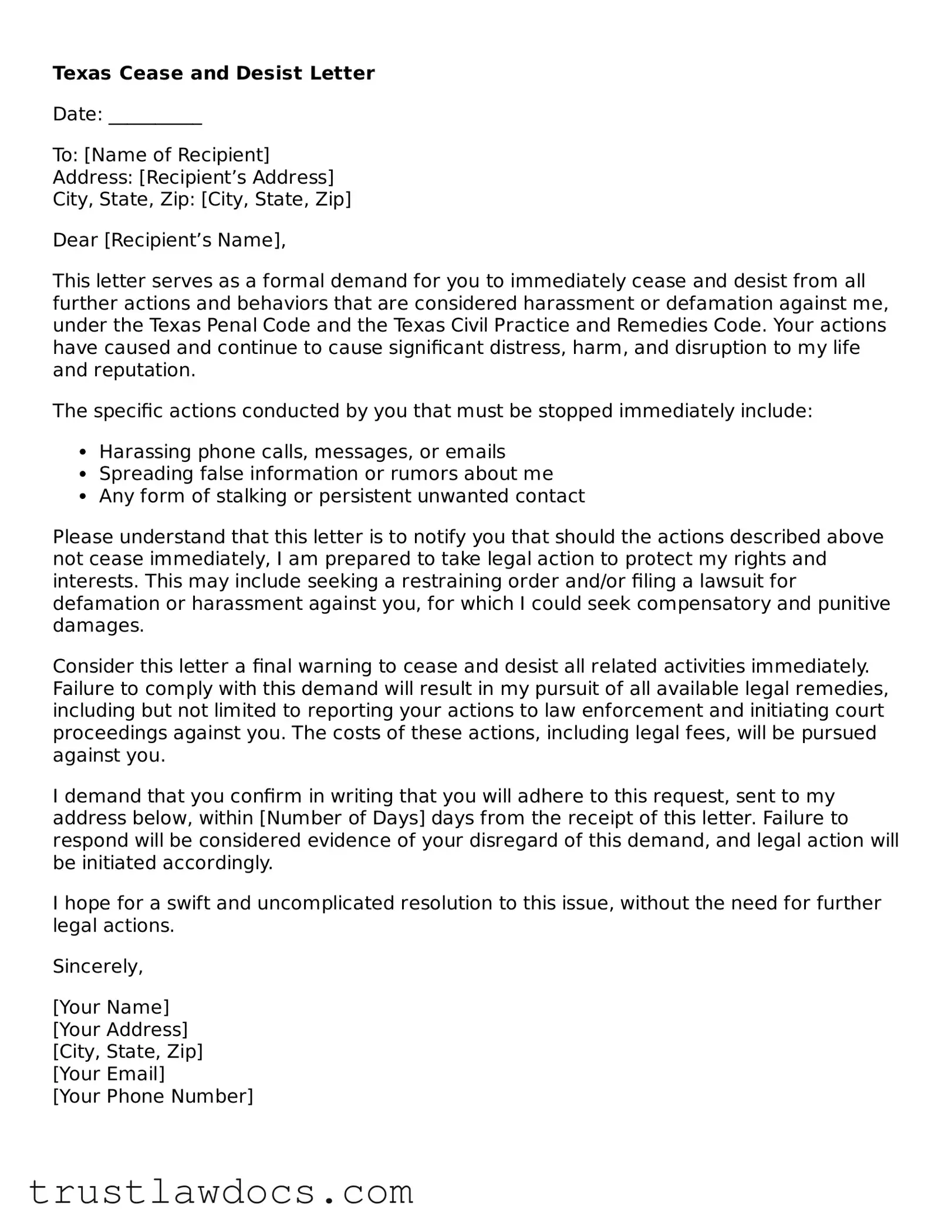Texas Cease and Desist Letter
Date: __________
To: [Name of Recipient]
Address: [Recipient’s Address]
City, State, Zip: [City, State, Zip]
Dear [Recipient’s Name],
This letter serves as a formal demand for you to immediately cease and desist from all further actions and behaviors that are considered harassment or defamation against me, under the Texas Penal Code and the Texas Civil Practice and Remedies Code. Your actions have caused and continue to cause significant distress, harm, and disruption to my life and reputation.
The specific actions conducted by you that must be stopped immediately include:
- Harassing phone calls, messages, or emails
- Spreading false information or rumors about me
- Any form of stalking or persistent unwanted contact
Please understand that this letter is to notify you that should the actions described above not cease immediately, I am prepared to take legal action to protect my rights and interests. This may include seeking a restraining order and/or filing a lawsuit for defamation or harassment against you, for which I could seek compensatory and punitive damages.
Consider this letter a final warning to cease and desist all related activities immediately. Failure to comply with this demand will result in my pursuit of all available legal remedies, including but not limited to reporting your actions to law enforcement and initiating court proceedings against you. The costs of these actions, including legal fees, will be pursued against you.
I demand that you confirm in writing that you will adhere to this request, sent to my address below, within [Number of Days] days from the receipt of this letter. Failure to respond will be considered evidence of your disregard of this demand, and legal action will be initiated accordingly.
I hope for a swift and uncomplicated resolution to this issue, without the need for further legal actions.
Sincerely,
[Your Name]
[Your Address]
[City, State, Zip]
[Your Email]
[Your Phone Number]
